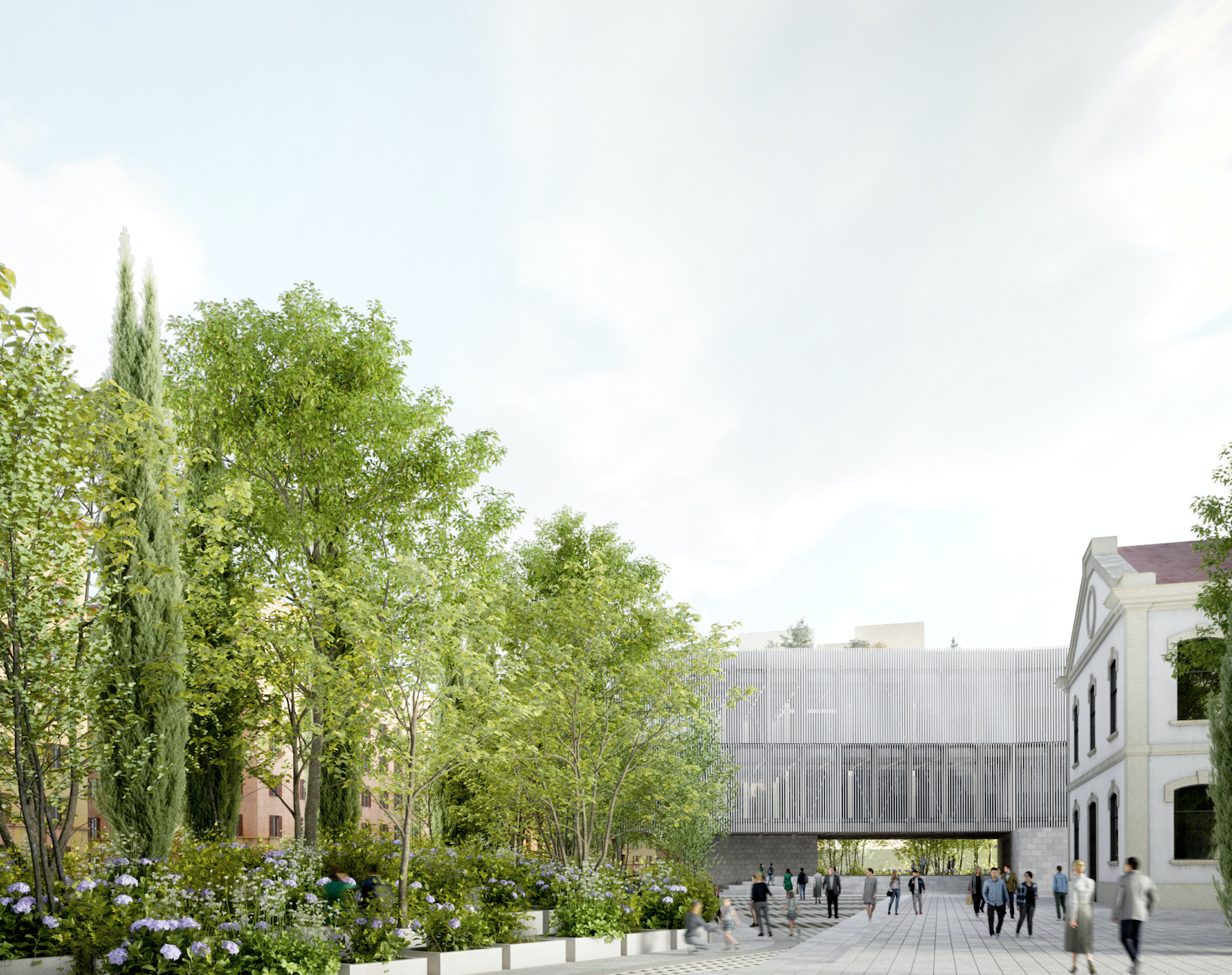GRANDE MAXXI INNOVATION HUB
MAXXI National Museum of 21st Century Arts
Rome, Italy
Claudio C. Araya Arias | Yayha Abdullah | Laura Catra | Iga Mayorek | Luis Ruiz Andres
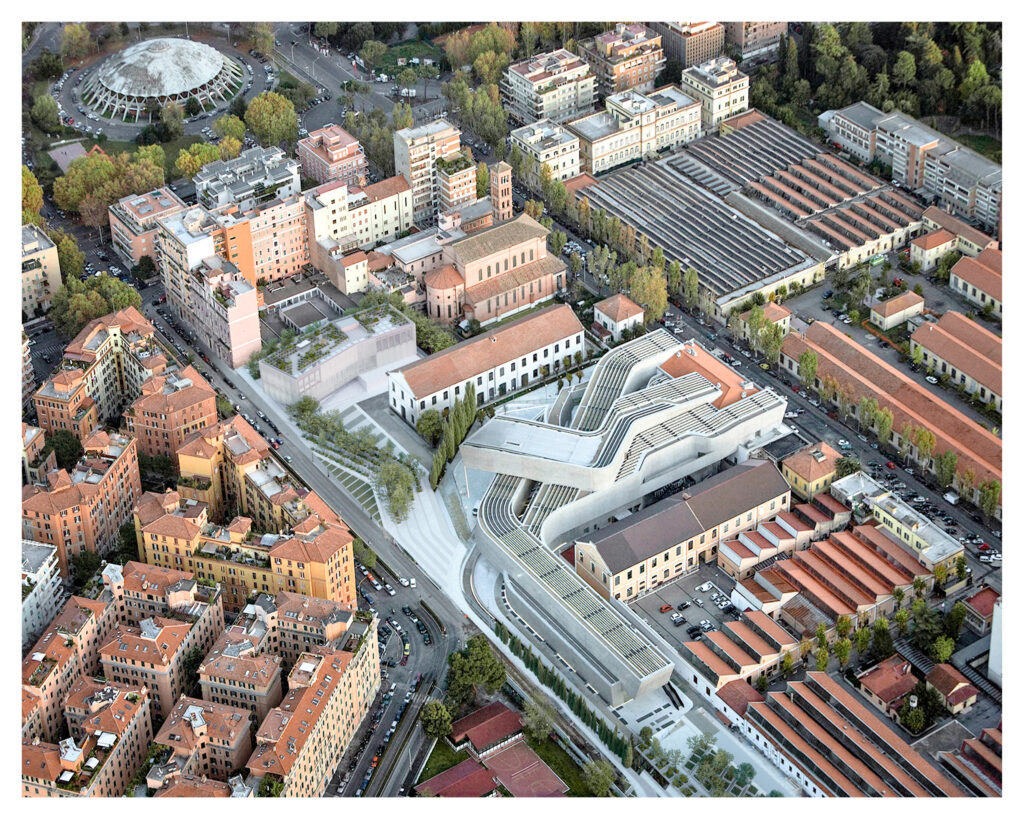
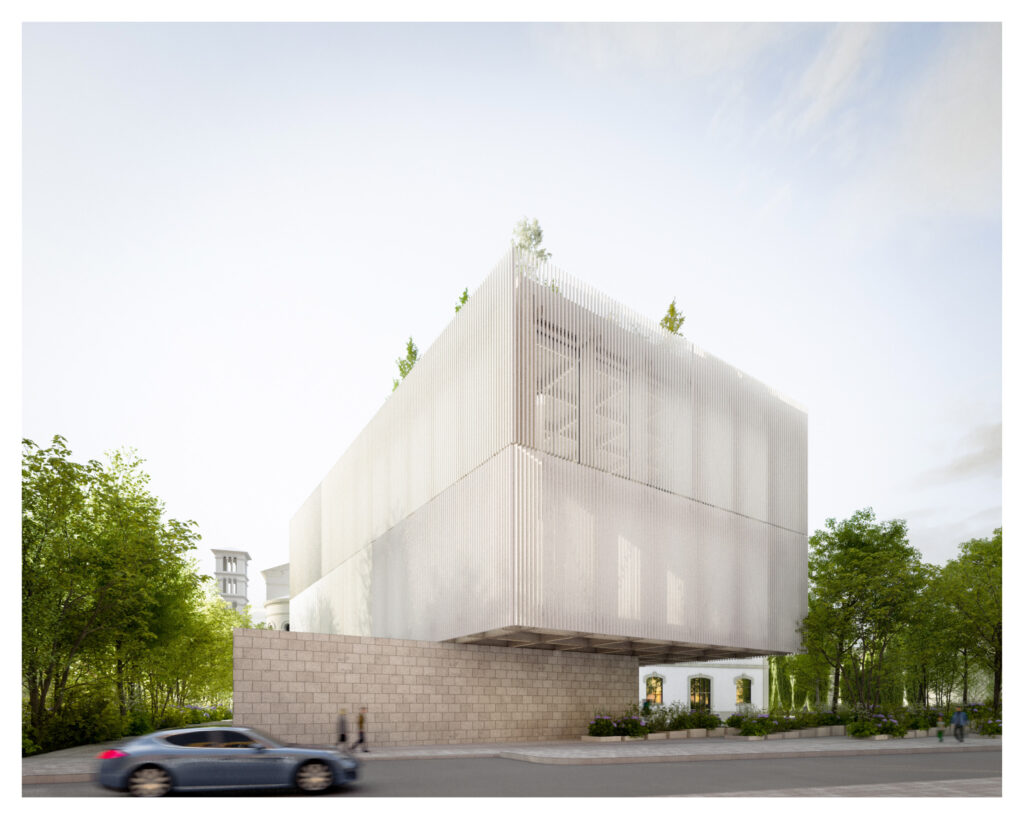
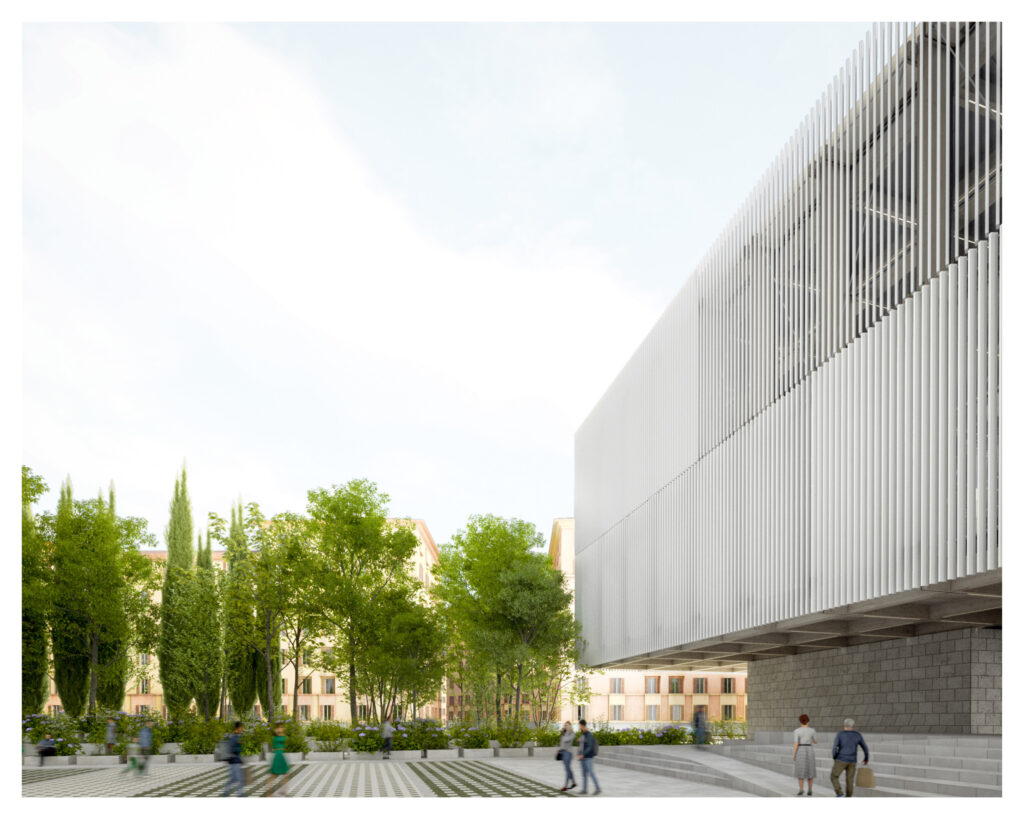
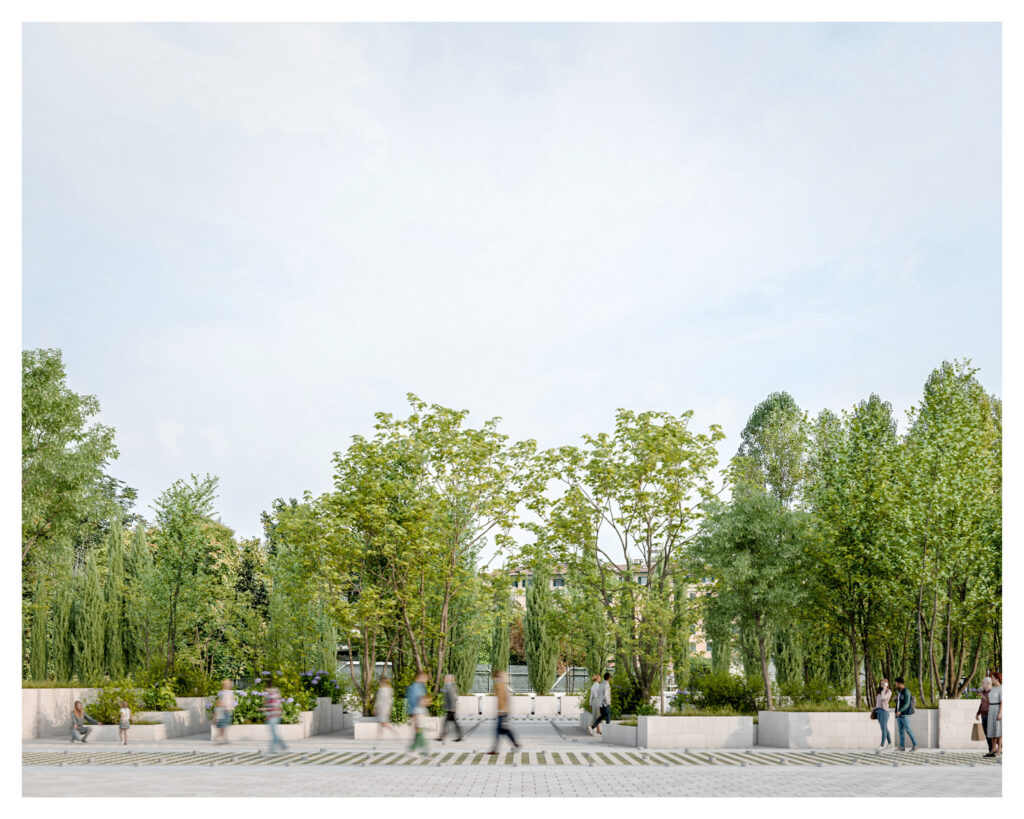
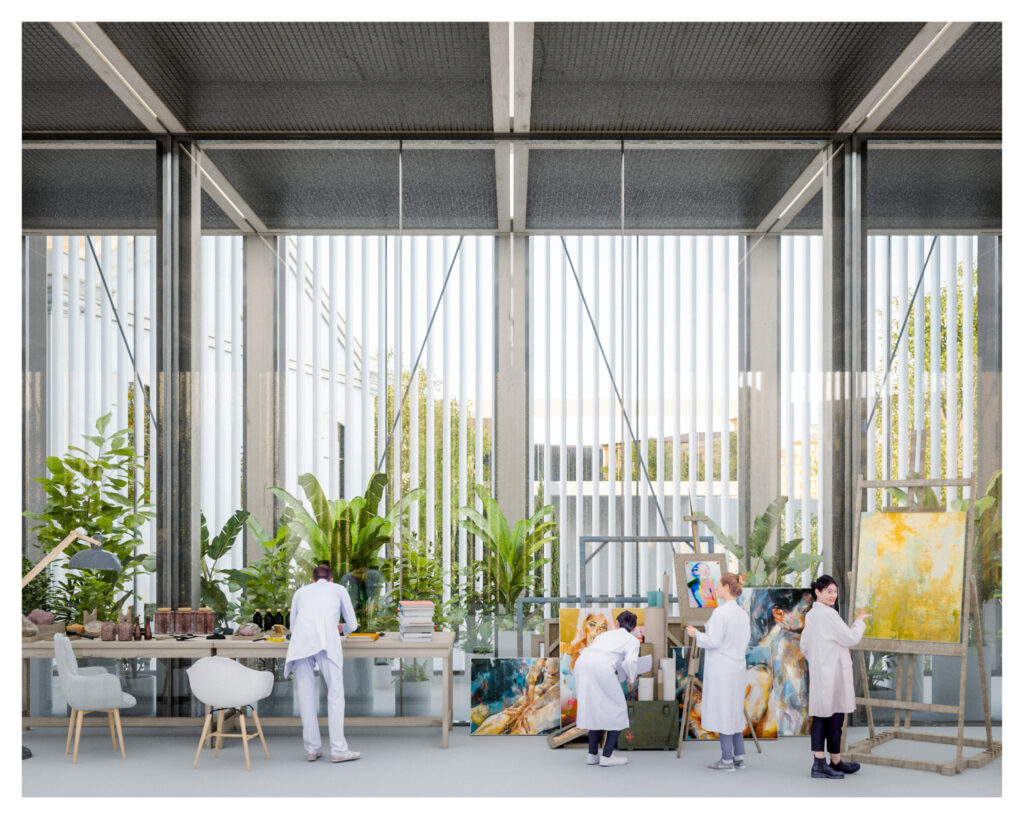
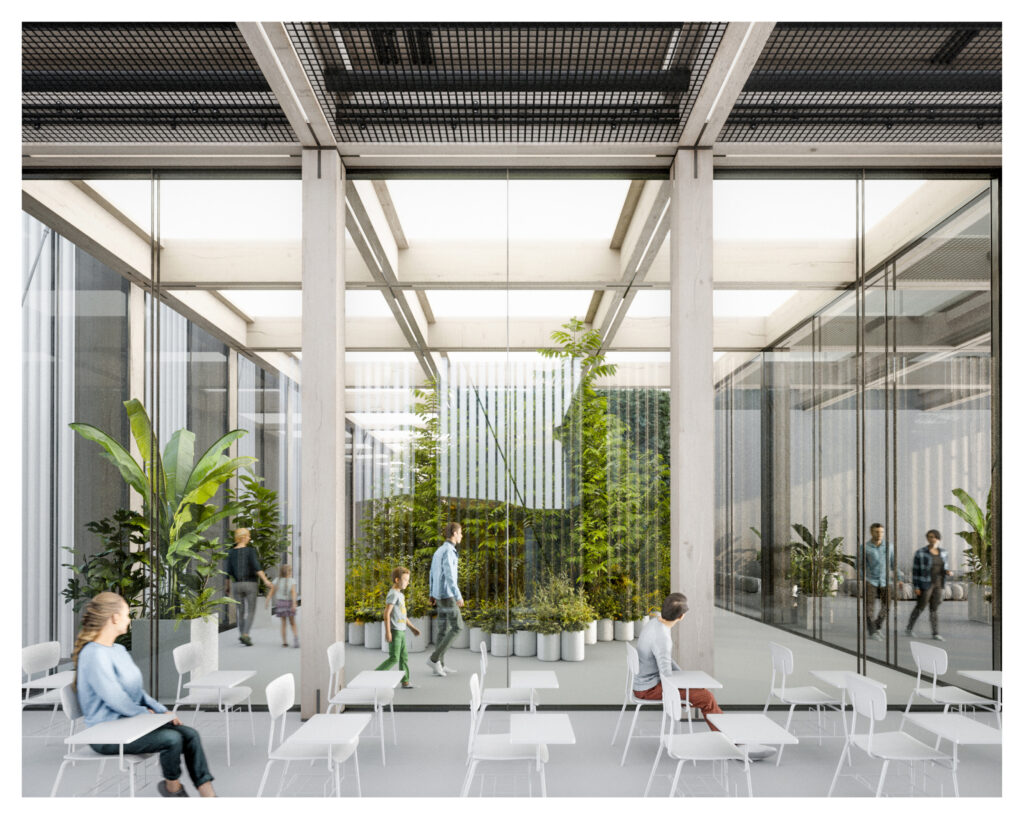
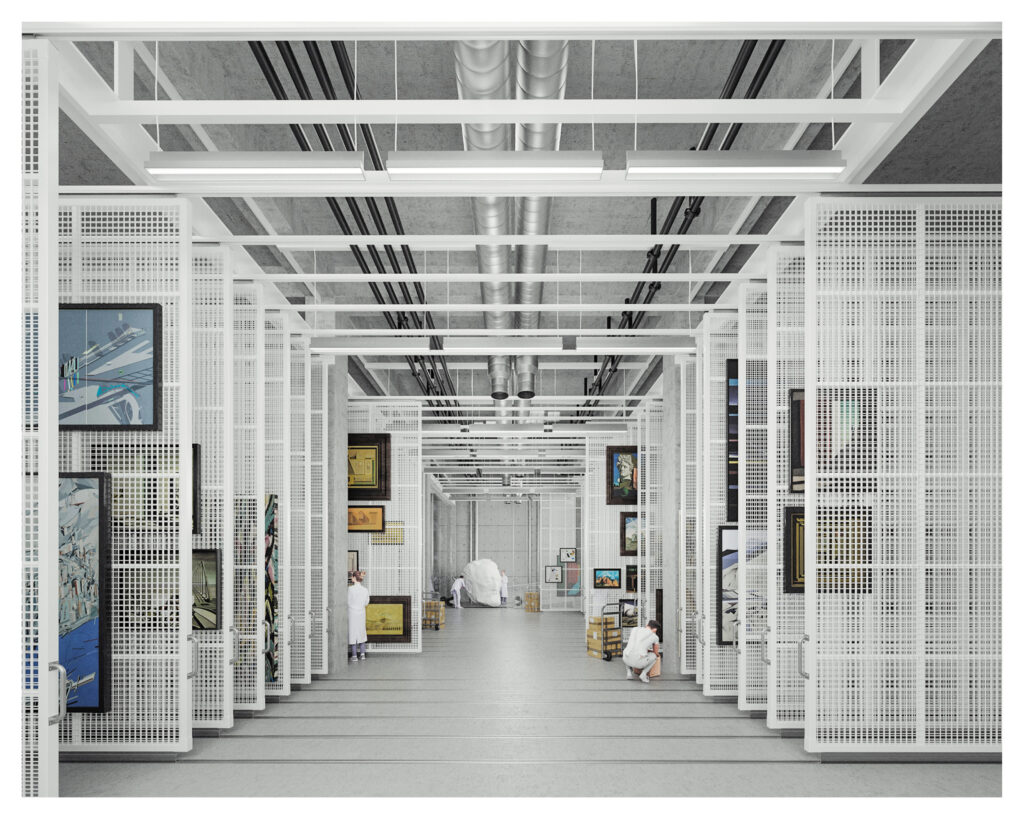
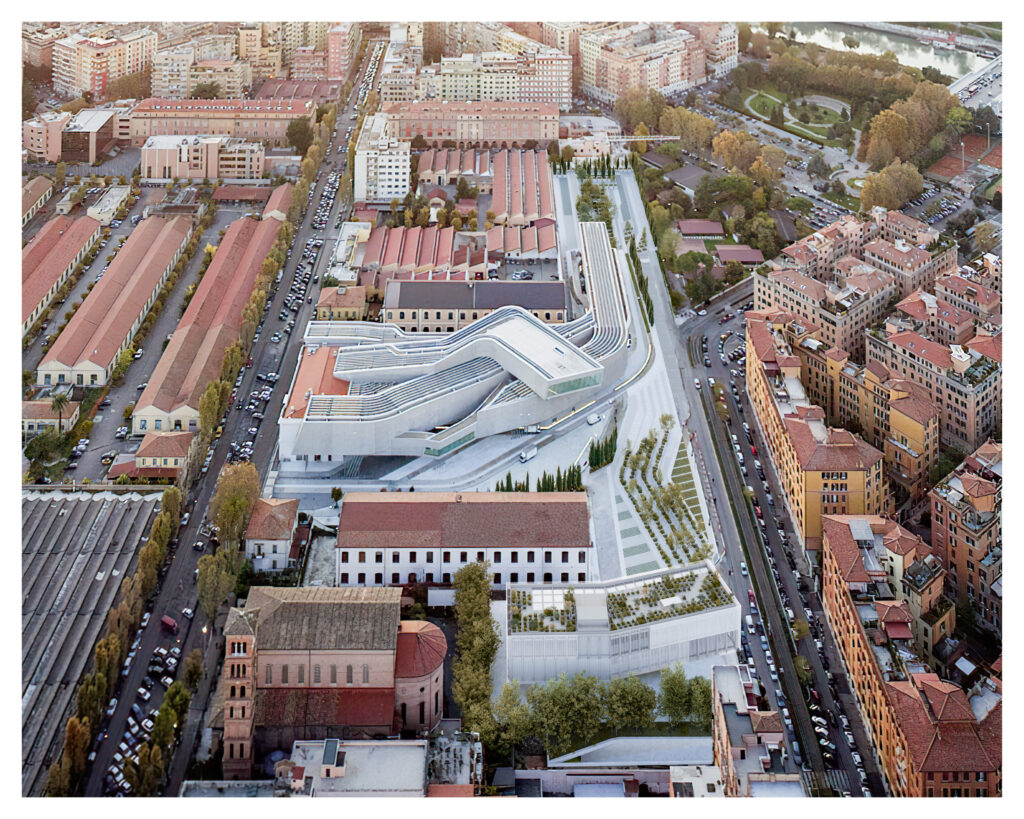
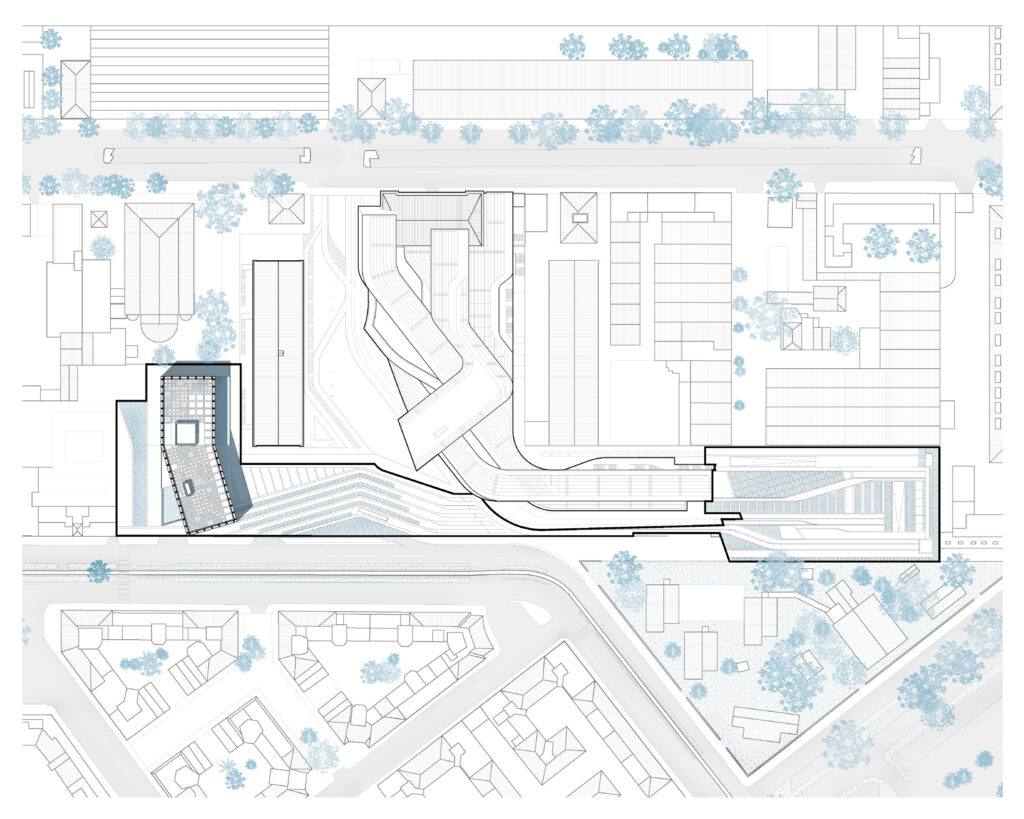
The competition will see the museum extended with two storeys of collaborative research, training and storage facilities, positioned on a plot north of the building. Named the MAXXI Hub, this will form the centrepiece of the Grande MAXXI Master Plan and will be linked to the Zaha Hadid Architects-designed Museum by a green roof.
As part of the plans to improve the environmental performance of the existing museum, approximately 3,000 square metres of solar panels will also be installed on its roof. A new public green space, named the MAXXI Green, will also be introduced, offering outdoor space for installations, events and vegetable gardens to grow food for the museum’s eateries. As part of this update to the landscape, any accessibility issues at the current museum will also be rectified.
Competition Proposal
What does it mean to be innovative in the richness of a historic city? A site must become a contemporary footprint, with memory and consideration of the history surrounding the city; a new arm of a collective historical body. The intervention area in question is the Flaminio neighbourhood, located in the northern sector of the historic capital of Rome. This neighbourhood is characterised by several changes in urban planning over the course of its history, which has very ancient origins, as evidenced by the findings of a domus rustica dating from a period between the 6th century BC and the beginning of the 2nd century AD.
Later, important innovations were introduced thanks to Pope Julius III, and the first industrial workshops were established in the post-unification period, along with studios of important artists. The area changed from agricultural countryside to a suburban area in the second half of the 19th century. First as a military character, then the site of the 1911 Universal Exhibition, which initiated the cultural vocation of the area. A residential urban development plan was then initiated and the Olympic Village was built next to it. These transformations of the area increased the prestige of the district, which became a cultural catalyst.
What influenced the approach to the site were how such urbanistic transformations, yet at the same time architectural, became a testimony of the times and thus a representation of a new need of the city and its people; one which speaks to the evolving concerns of sustainable practices and material relationships. Thus the project becomes a contemporary palimpsest which remains cognizant of its historic and recent past. The building proposed to support the current MAXXI museum will be the creation of a real temporal and spatial bridge that will connect the different existing areas of the public space of Via Masaccio, creating new ones, in close contact with the building itself. In this way, new and changing instances and ways of using the spaces will be created.
In establishing continuity with the existing project the concrete base became the anchoring element, which represents the pedestal on which the main programs sit atop. At first glance it appears as a monolith similar to the existing one, but slowly reveals its visible structure from various angles. The façade system creates the effect of variable transparency and translucency through the use of translucent fins or vertical brise soleil, relating to the concept of layering time, in which the building reveals itself gradually as the visitor approaches and moves around its site.
Through this façade system, the interior programs, such as the art and sculpture restoration, are unveiled from the exterior as you engage with the building at a closer distance in a didactic act of displaying the methods of these crafts to the public. In addition, the building’s interior becomes more visibly apparent throughout the course of the day as the sun begins to set, allowing the translucent façade to fade away as the interior activity vibrantly comes to surface. The presence of vegetation which, as it grows, will completely change its appearance as the days go by, as well as allowing the site to transform throughout the year as the seasons change. Thanks to the glulam construction system chosen, it is possible to guarantee high thermal performance which means lower energy consumption together with greater comfort for the users of the new centre.
It should be noted that the materials used in the project are natural and environmentally friendly for an unequivocal choice that combines the protection of the environment with the protection of the health of these spaces.
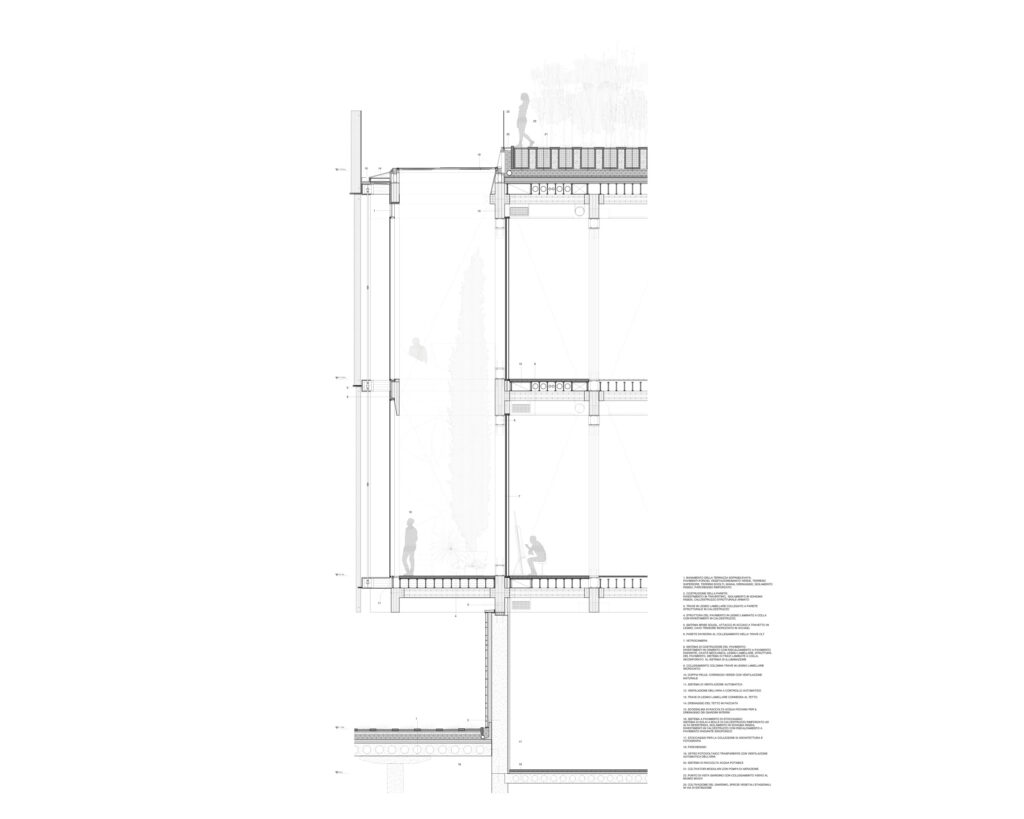
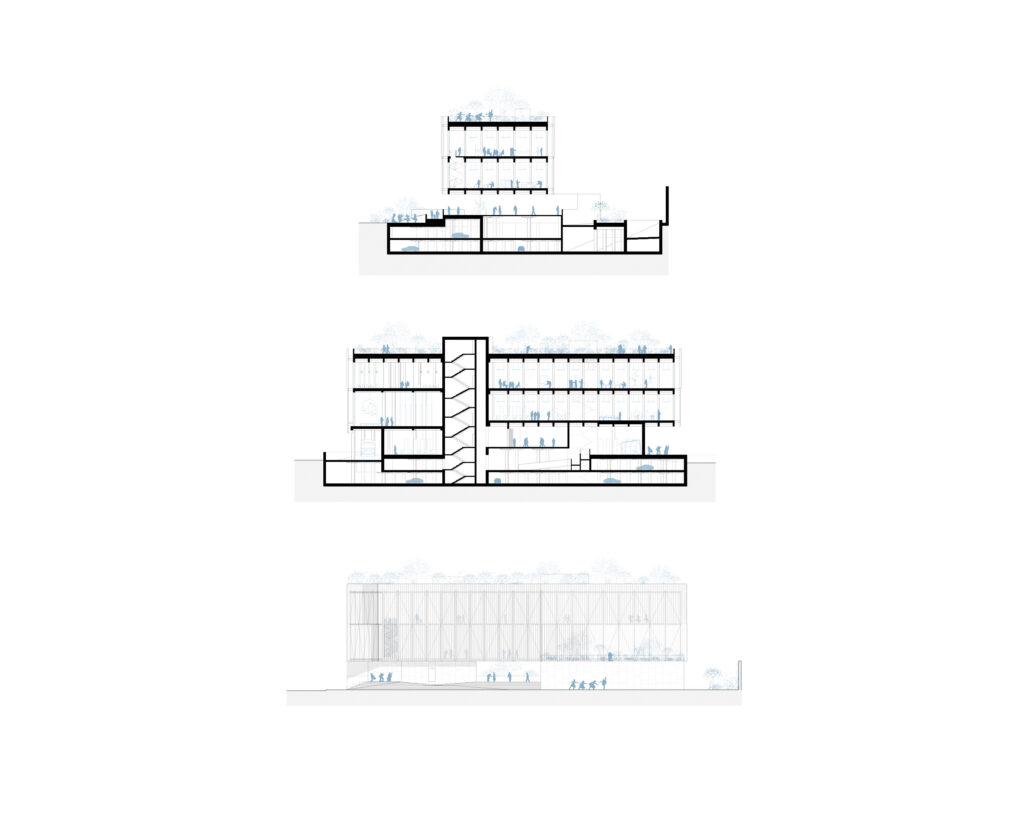

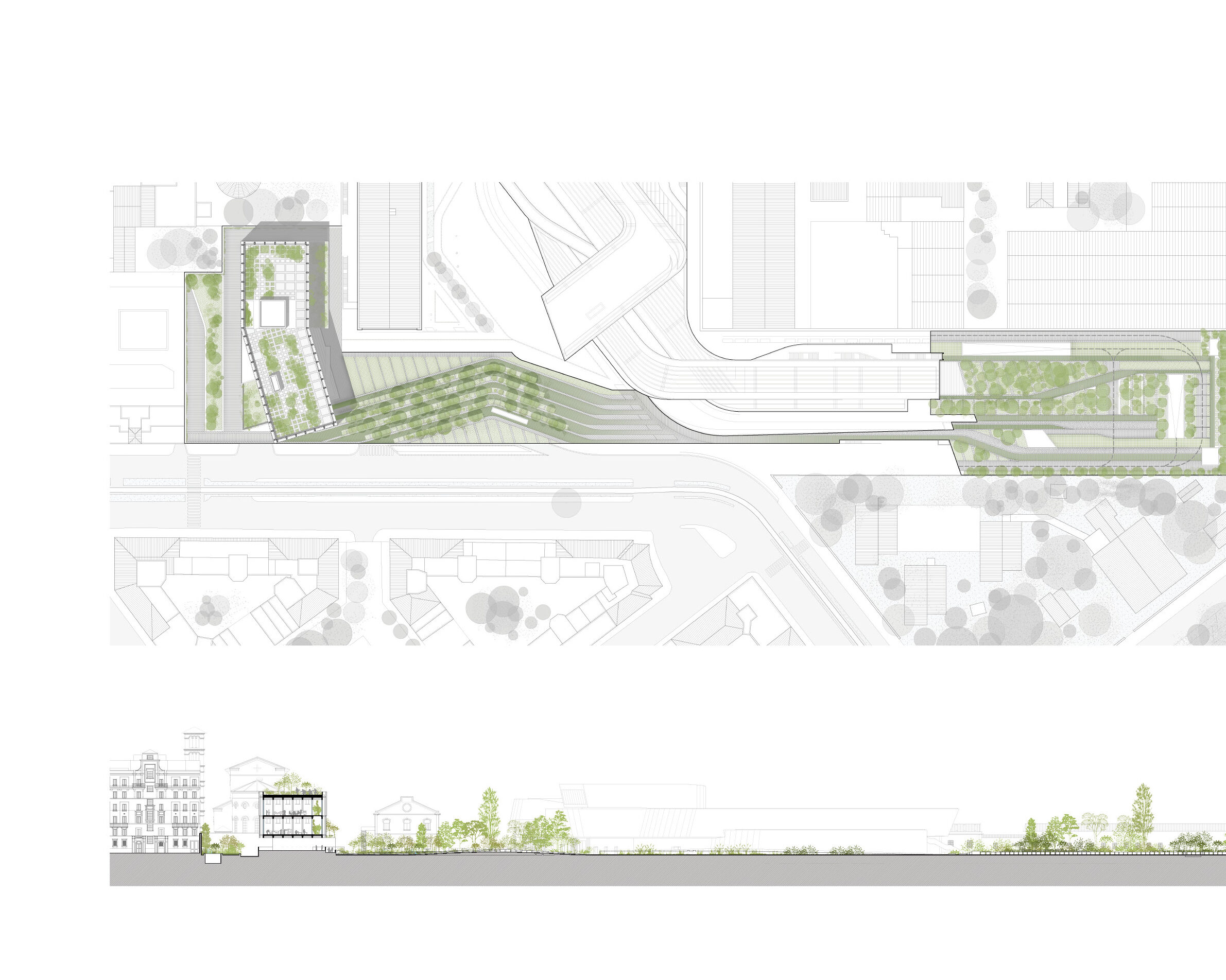
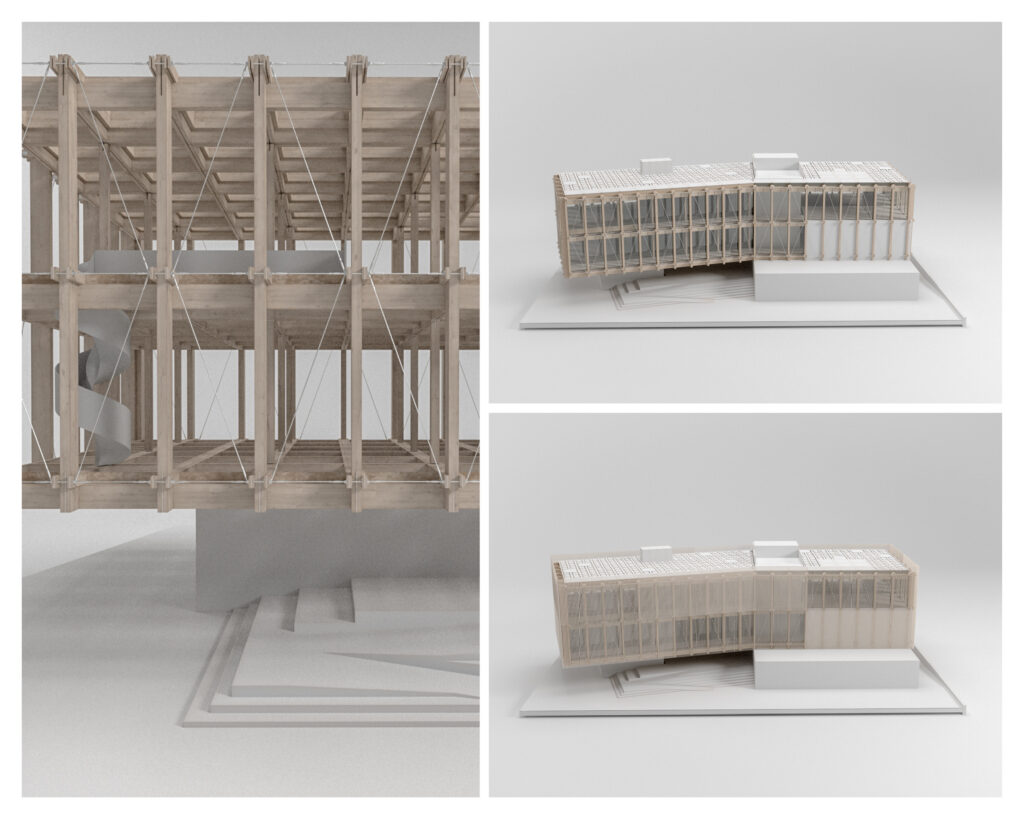
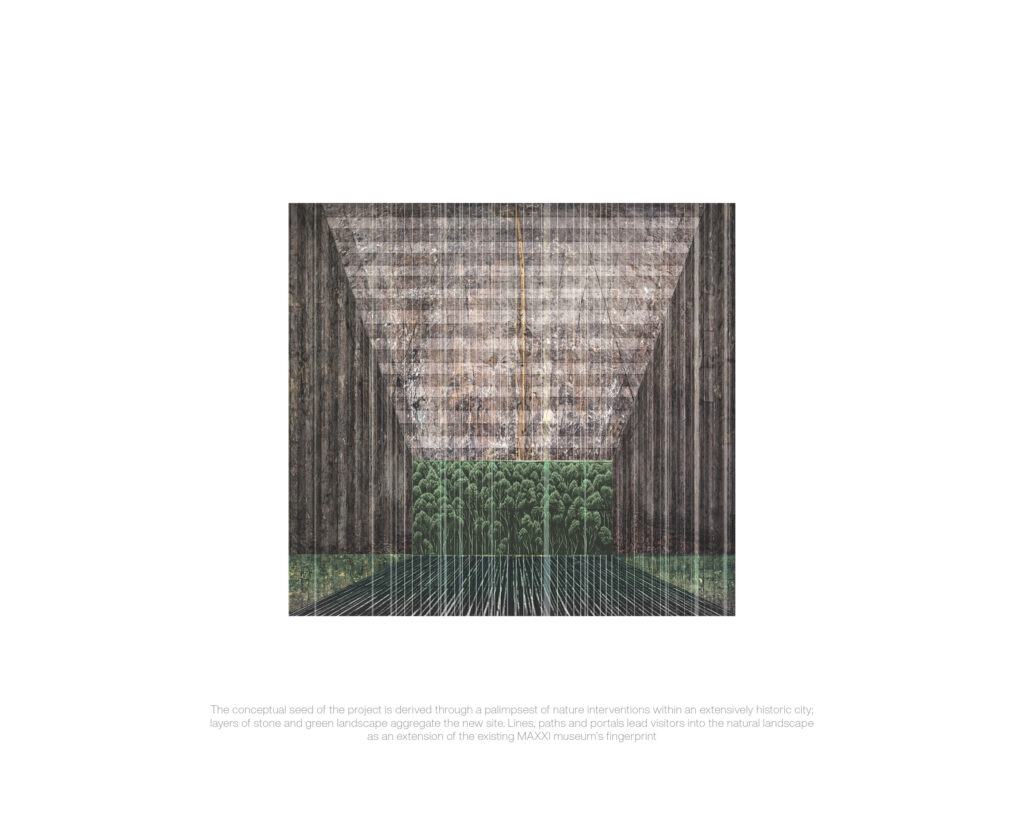
GRANDE MAXXI
https://www.maxxi.art/wp-content/uploads/2022/07/Grande_MAXXI-proposte.pdf
BETA ARCHITETTURA
